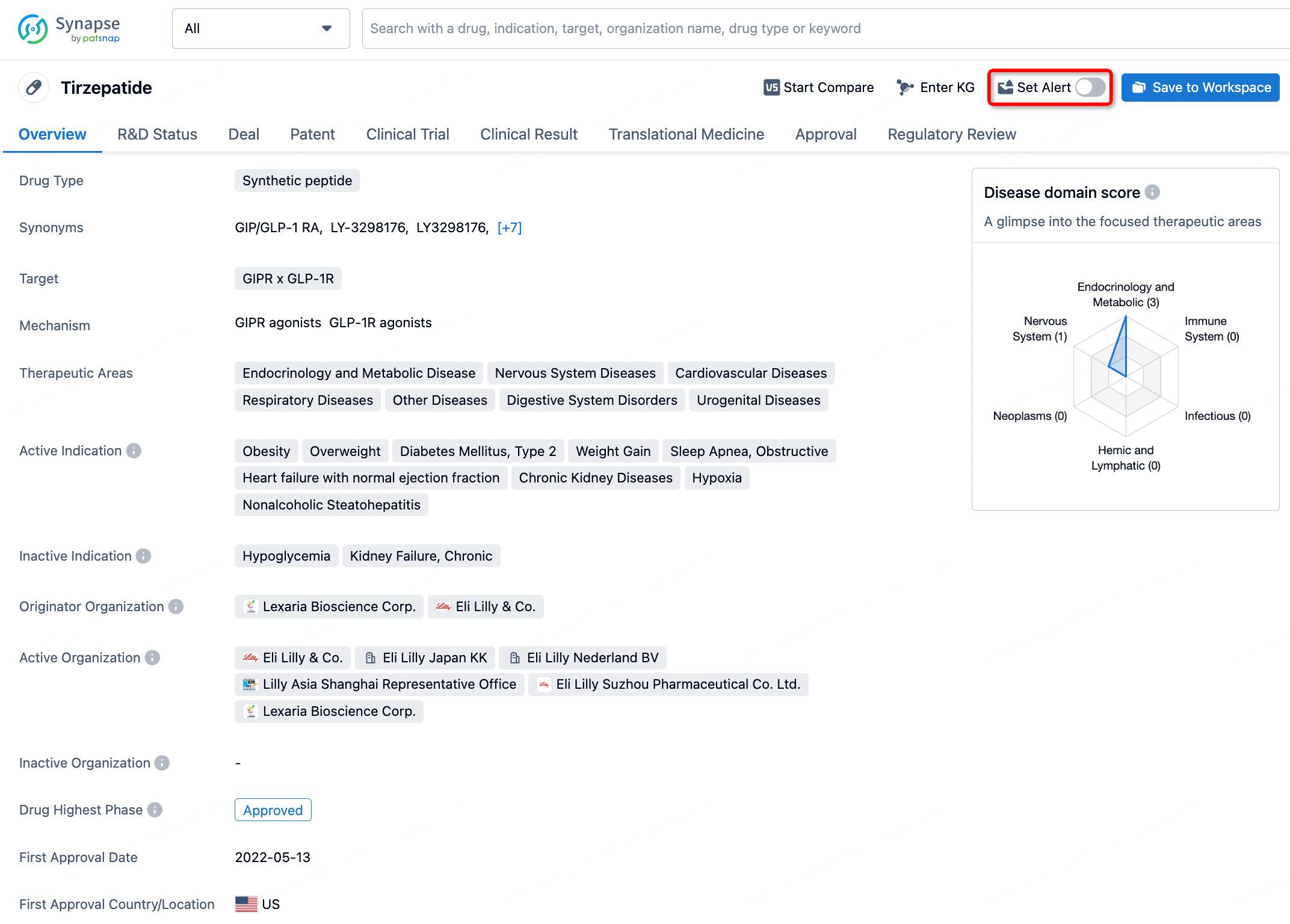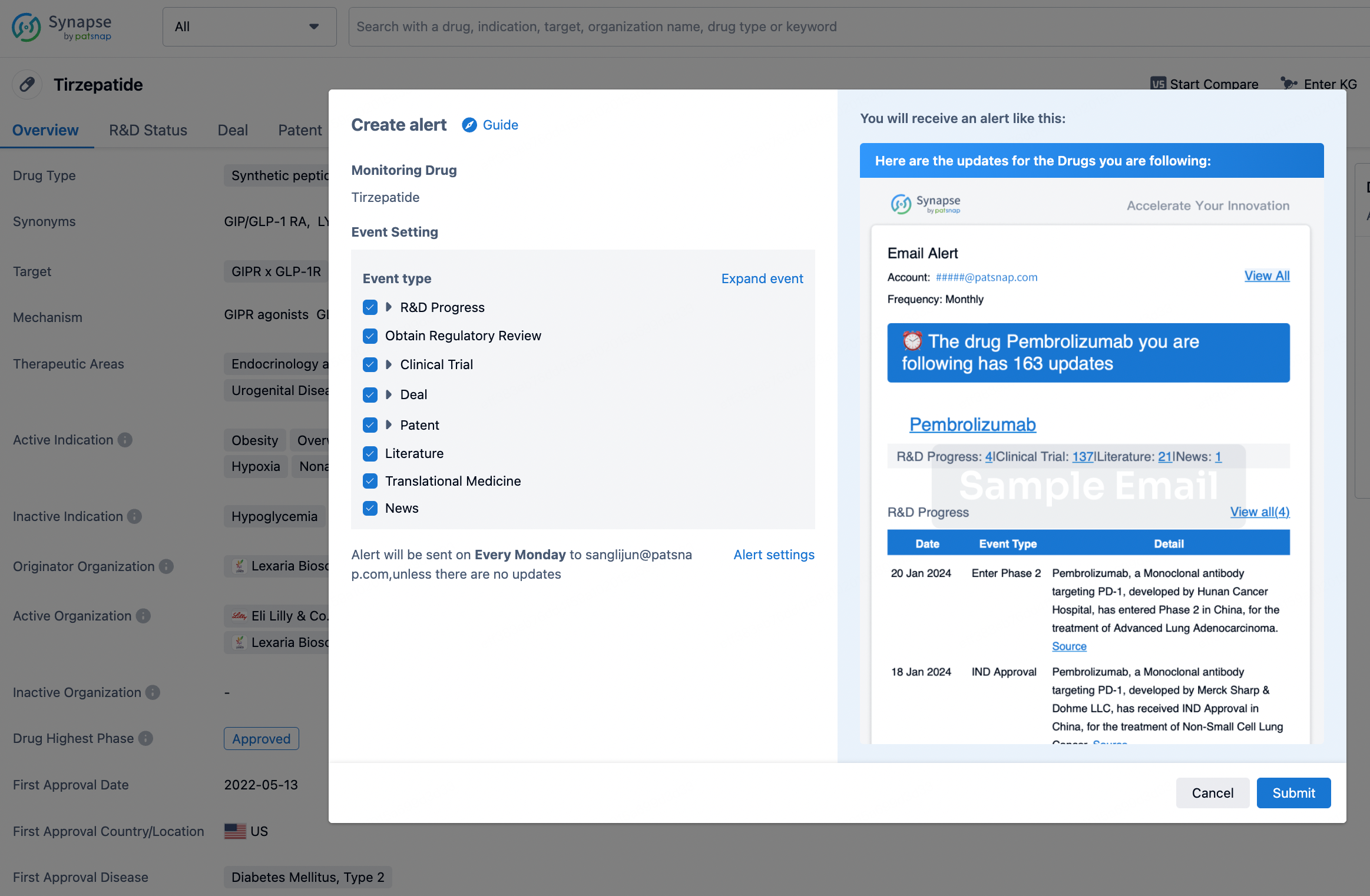Request Demo
What are the side effects of Clindamycin Hydrochloride?
12 July 2024
Clindamycin Hydrochloride is an antibiotic commonly used to treat a variety of bacterial infections. While it is effective in treating infections, it's important to be aware of the potential side effects that may accompany its use. Understanding these side effects can help patients manage and mitigate any adverse reactions they may experience.
One of the most common side effects of Clindamycin Hydrochloride is gastrointestinal discomfort. Many patients report experiencing nausea, vomiting, and diarrhea. In some cases, the diarrhea can be severe and may indicate a more serious condition known as Clostridium difficile-associated diarrhea (CDAD). CDAD is a significant concern because it can lead to severe colitis, a serious inflammation of the colon that requires immediate medical attention.
Another notable side effect is skin reactions. Some people may develop rashes, itching, or hives after taking Clindamycin Hydrochloride. These reactions can range from mild and manageable to severe and potentially life-threatening. In rare cases, patients may experience Stevens-Johnson syndrome or toxic epidermal necrolysis, both of which are serious skin conditions that require urgent medical care.
Allergic reactions are another potential side effect of Clindamycin Hydrochloride. Symptoms of an allergic reaction include swelling of the face, lips, tongue, or throat, difficulty breathing, and severe dizziness. If any of these symptoms occur, it is crucial to seek emergency medical assistance immediately, as allergic reactions can escalate rapidly and become life-threatening.
Additionally, some patients may experience changes in their blood counts while taking Clindamycin Hydrochloride. This can include a decrease in white blood cells, which are essential for fighting infections, or other blood-related issues such as anemia or thrombocytopenia. Regular blood tests may be required to monitor these conditions, especially if Clindamycin Hydrochloride is to be used for an extended period.
Moreover, liver function can be affected by this antibiotic. Elevated liver enzymes have been reported, indicating liver stress or damage. Symptoms of liver issues may include jaundice, dark urine, fatigue, and abdominal pain. It is important to inform your healthcare provider if you have a history of liver disease before starting Clindamycin Hydrochloride.
In some cases, patients may experience a metallic or unpleasant taste in their mouth while taking this medication. Although this is generally not serious, it can be bothersome and affect appetite and nutrition.
Vaginal yeast infections or oral thrush may also occur due to the disruption of normal bacterial flora. These infections can cause significant discomfort and require antifungal treatment.
It's essential to follow the prescribed dosage and complete the full course of Clindamycin Hydrochloride as instructed by your healthcare provider to minimize the risk of side effects and ensure the effectiveness of the treatment. If you experience any severe or persistent side effects, it is important to contact your healthcare provider promptly.
In conclusion, while Clindamycin Hydrochloride is an effective antibiotic for many bacterial infections, being informed about its potential side effects can help you manage and address any adverse reactions. Always communicate openly with your healthcare provider about any pre-existing conditions or concerns to ensure your safety while using this medication.
One of the most common side effects of Clindamycin Hydrochloride is gastrointestinal discomfort. Many patients report experiencing nausea, vomiting, and diarrhea. In some cases, the diarrhea can be severe and may indicate a more serious condition known as Clostridium difficile-associated diarrhea (CDAD). CDAD is a significant concern because it can lead to severe colitis, a serious inflammation of the colon that requires immediate medical attention.
Another notable side effect is skin reactions. Some people may develop rashes, itching, or hives after taking Clindamycin Hydrochloride. These reactions can range from mild and manageable to severe and potentially life-threatening. In rare cases, patients may experience Stevens-Johnson syndrome or toxic epidermal necrolysis, both of which are serious skin conditions that require urgent medical care.
Allergic reactions are another potential side effect of Clindamycin Hydrochloride. Symptoms of an allergic reaction include swelling of the face, lips, tongue, or throat, difficulty breathing, and severe dizziness. If any of these symptoms occur, it is crucial to seek emergency medical assistance immediately, as allergic reactions can escalate rapidly and become life-threatening.
Additionally, some patients may experience changes in their blood counts while taking Clindamycin Hydrochloride. This can include a decrease in white blood cells, which are essential for fighting infections, or other blood-related issues such as anemia or thrombocytopenia. Regular blood tests may be required to monitor these conditions, especially if Clindamycin Hydrochloride is to be used for an extended period.
Moreover, liver function can be affected by this antibiotic. Elevated liver enzymes have been reported, indicating liver stress or damage. Symptoms of liver issues may include jaundice, dark urine, fatigue, and abdominal pain. It is important to inform your healthcare provider if you have a history of liver disease before starting Clindamycin Hydrochloride.
In some cases, patients may experience a metallic or unpleasant taste in their mouth while taking this medication. Although this is generally not serious, it can be bothersome and affect appetite and nutrition.
Vaginal yeast infections or oral thrush may also occur due to the disruption of normal bacterial flora. These infections can cause significant discomfort and require antifungal treatment.
It's essential to follow the prescribed dosage and complete the full course of Clindamycin Hydrochloride as instructed by your healthcare provider to minimize the risk of side effects and ensure the effectiveness of the treatment. If you experience any severe or persistent side effects, it is important to contact your healthcare provider promptly.
In conclusion, while Clindamycin Hydrochloride is an effective antibiotic for many bacterial infections, being informed about its potential side effects can help you manage and address any adverse reactions. Always communicate openly with your healthcare provider about any pre-existing conditions or concerns to ensure your safety while using this medication.
How to obtain the latest development progress of all drugs?
In the Synapse database, you can stay updated on the latest research and development advances of all drugs. This service is accessible anytime and anywhere, with updates available daily or weekly. Use the "Set Alert" function to stay informed. Click on the image below to embark on a brand new journey of drug discovery!
AI Agents Built for Biopharma Breakthroughs
Accelerate discovery. Empower decisions. Transform outcomes.
Get started for free today!
Accelerate Strategic R&D decision making with Synapse, PatSnap’s AI-powered Connected Innovation Intelligence Platform Built for Life Sciences Professionals.
Start your data trial now!
Synapse data is also accessible to external entities via APIs or data packages. Empower better decisions with the latest in pharmaceutical intelligence.


